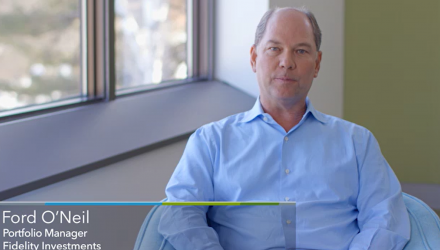What was one of the most notable narratives in investing in 2023? Big crises? A crypto rebound? The interest rate battle against inflation? All of these have played a role. Another intriguing story in 2023 was the growth of active ETFs. Active management has significantly grown its share of the ETF landscape in new launches and AUM.
Active management’s ability to potentially enhance portfolios, address volatility, and look for outperformance has contributed to that interest. In a recent video analyzing the benefits of active management, Fidelity Investments portfolio manager Ford O’Neil spoke to the merits of active management.
The Active Management Landscape
Actively managed ETFs have seen record inflows this year, underscoring the burgeoning interest in the category. From fixed income to equities, active funds have drawn interest as investors look to their ability to manage what has been a volatile 2023.
See more: Fidelity Leaders Talk Non-Traditional Factors, Active
In a recent video, portfolio manager Ford O’Neil emphasized Fidelity Investments’ research capabilities. That includes fundamental and quantitative research. Citing his experience managing fixed income investments, O’Neil pointed to the benefits of active management in expanding a strategy’s investable universe.
“On the equity side, a portfolio benchmarked against the Russell 3000 index covers over 95% of outstanding U.S. equities. However, within fixed income, even broad indices like the Bloomberg U.S. Aggregate Bond Index, only represent half the size of the U.S. fixed income market,” O’Neil explained.
“Put another way, my investable universe in the U.S. is twice as large as that of my benchmark, giving me a greater opportunity set to potentially generate excess total returns across a variety of market environments,” he added.
Looking for Opportunities for Dispersion
That creates a series of opportunities for dispersion, O’Neil continued. Over an eight-year period, he pointed out, there have been significant opportunities for outperformance against the Bloomberg Barclays U.S. Aggregate Bond Index that active management could seek. Potential structural advantages in the fixed income market can play a role for active. The new issue market and opportunistic trading versus pricing anomalies can offer opportunities, he noted.
“The extent of these advantages is partly determined by the quality and quantity of the fundamental research and quantitative analysis used to find attractive investment opportunities and by the trading expertise employed to implement these ideas,” O’Neil said.
Fidelity Investments itself offers active ETFs that may appeal to investors. Investors looking for an active fixed income ETF may also consider strategies like FBND, the Fidelity Total Bond ETF. For those investors who share O’Neil’s passion for active, FBND is one option to consider in an ever-growing active landscape.
For more news, information, and strategy, visit the ETF Investing Channel.
Fidelity Investments® is an independent company, unaffiliated with VettaFi. There is no form of legal partnership, agency affiliation, or similar relationship between VettaFi and Fidelity Investments, nor is such a relationship created or implied by the information herein. Fidelity Investments has not been involved with the preparation of the content supplied by VettaFi and does not guarantee, or assume any responsibility for its content.

